South American fruits are diverse; many are native, tropical, and exotic to the region. The continent’s diverse climates and fertile soils, from the lush rainforests of the Amazon to the highlands of the Andes, contribute to its incredible variety of fruits.
Some of the most popular South American fruits include the sweet and nutritious acai berry, the creamy avocado, and the tangy passion fruit. You will also find other delightful fruits, though not native to the region, such as mango, mangosteen, lychee, and more.
Fruits in South America have vibrant colors, tantalizing flavors, and exotic names. They are enjoyed fresh and play a key role in local dishes and beverages.
The diverse regions of South America, including Brazil, Colombia, Peru, Ecuador, and more, contribute to the wide fruit choices. In this article, you’ll discover 30 different kinds of South American fruits with many insights.
There’s a special section that also introduces traditional dishes and drinks made from these fruits. So, let’s dive in and uncover the mouth-watering secrets of these fantastic fruits and how they shape culinary traditions across the continent.
Discover 30 Native and Tropical South American Fruits
Here are 30 South American fruits, highlighted with native and tropical gems. Use filters to navigate your search easily.
Açaí
- Berry
Native to the rainforests of South America, açaí is a small, grape-like berry with a deep purple hue. The berries are often harvested by local communities and traditionally consumed in smoothies, bowls, and even savory dishes.
The sustainable harvesting practices of açaí also support local economies and preserve the delicate rainforest ecosystem. These fruits are super fruit packed with antioxidants, healthy fats, and fiber.
Camu Camu
- Berry
Camu camu is a small, red or purple berry that grows on Myrciaria dubia shrubs found in the lush riverbanks of Peru and Brazil in the Amazon rainforest.
Camu camu has a very sour and tart taste. Thus, using the fruit in juices, smoothies, dishes, and dietary supplements is more common than eating directly.
These berries are exceptionally high in vitamin C and antioxidants, making them a powerhouse in boosting immunity and combating inflammation.
Cherimoya
- Aggregate Fruit
Cherimoya, commonly known as “custard apple,” is a famous fruit from the Andean valleys of Ecuador, Peru, and Bolivia in South America. The fruit has a green, conical, or heart shape that ripens to a brown, fissured surface.
Cherimoya’s green, scaly exterior hides a luscious, white pulp often described as a blend of banana, pineapple, and strawberry flavors. Overall, it has a creamy texture and a sweet, tropical taste.
Cherimoya’s flesh is a popular ingredient in smoothies, desserts, and salads, and it is also ideal for spooning out and eating fresh.
Peach Palm
- Drupe/stone Fruit
Known scientifically as Bactris gasipaes, peach palm grows in clusters with small, round fruits that vary in color from yellow to red. Peach palm is native to the tropical forests of South and Central America.
Peach palm’s flesh is starchy, slightly sweet, and often compared to the flavor of chestnuts. They are also prized for starchy and oily fruits. Commonly, the raw fruit spoils quite fast after fully ripening. Yet, people often store peach palm as a dry meal or preserve.
Aside from pure consumption, peach palm is a good source of fiber, aiding your digestive system, improving your immune system, and even reducing cholesterol levels.
Guava
- Berry
Guava has roots in Mexico, northern South America, Central America, and the Caribbean. Known for its vibrant green or yellow skin and luscious pink or white flesh, guava is a popular choice in South American cuisines, from Brazil to Colombia.
Guava has a sweet and slightly tangy flavor. It’s perfect for smoothies, desserts, beverages, jams, sauces, and savory dishes. Packed with vitamins C and A, this fruit is a nutritional powerhouse.
Passion Fruit
- Berry
In South America, passion fruit is a beloved fruit thriving in the tropical climates of Brazil, Peru, and Colombia. This round or oval fruit grows from vines and comes in yellow, red, purple, or green.
Slice a passion fruit open, there’s a juicy, jelly-like center with many seeds and a mildly crunchy texture. You can savor these yellow pulpy seeds straight or use them for your juice recipes.
In Cajamarca of Peru, a variant called Gulupa or Poro Poro grows, producing purple passion fruits. Plus, there’s Grenadia or Granadilla, an orange passion fruit variety with gray pulp, enjoyed in countries like Bolivia, Colombia, Nicaragua, Costa Rica, Ecuador, and Mexico.
In Brazil, maracuja is a popular variety known as yellow passion fruit. Unlike regular ones, they have yellow-green skin.
Lucuma
- Pome Fruit
Lucuma, also called “the Gold of the Incas, is a fruit from the Sapotaceae family, originating from the Andean regions of Bolivia, Chile, Ecuador, and Peru.
Lucuma has an oval-shaped bright yellow when mature and pulp with a creamy texture and a sweet taste reminiscent of maple and sweet potato. Its natural sweetness makes it an excellent sugar substitute.
You can enjoy it raw or mix it in smoothies, ice cream, yogurt, oatmeal, or chia pudding recipes. Peruvian ice cream flavors even feature lucuma. Plus, the fruit’s low glycemic index benefits blood sugar management.
Pineapple
- Multiple Fruit
Pineapple is a tropical delight native to South America, especially from the areas surrounding Paraguay and southern Brazil. It’s a spiky fruit with sweet and slightly tangy flavors.
People often eat pineapple raw or add them to a refreshing fruit salad, make a thirst-quenching juice or cocktails, like piña colada. It also enhances the flavor of salsas, ceviches, and even barbecue marinades.
There are more than 37 varieties of pineapples in the world, with the Ananas comosus variant common in the northern parts of South America. According to Statista, Brazil was the 4th largest pineapple producer in the world in 2021.
Avocado
- Berry
Native to regions such as Mexico, Peru, and Brazil, avocado is a creamy fruit famous for its creamy texture and mild, nutty flavor.
Regarding culinary uses, avocado shines in guacamole, avocado toast, sauces, smoothies, and desserts. Packed with healthy monounsaturated fats, vitamins E and K, and essential minerals, avocados offer significant nutritional benefits.
FYI, In South American Spanish-speaking countries like Argentina, Chile, Peru, and Uruguay, avocado is called “palta”.
Jabuticaba
- Berry
Jabuticaba is an exotic fruit native to Brazil. The dark purple, grape-like fruit grows directly on the trunk and branches of the Jabuticaba tree. Each jabuticaba berry has a thick-skinned exterior that hides white or rosy pink gelatinous flesh within.
With their sweet and tart flavor, locals often enjoy jabuticaba fresh or use them in traditional Brazilian dishes (e.g., jellies and jams) and beverages (e.g., wines and liqueurs).
Jabuticaba is rich in antioxidants, vitamin C, and anthocyanins, making it a nutritious addition to various recipes.
Feijoa
- Berry
Feijoa, aka pineapple guava, is an exotic fruit native to the highlands of South America, particularly Brazil, Colombia, and Uruguay. This small, oval fruit has a green, slightly rough skin and a sweet, aromatic flavor with pineapple, guava, and mint notes.
The dense, grainy, and creamy flesh of feijoa is best enjoyed fresh by cutting the fruit in half and scooping out the insides. It’s also a good component in smoothies, jams, and desserts.
Feijoa’s high fiber content supports digestion, while its antioxidants help fight free radicals, promoting overall well-being.
Tamarillo
- Berry
Tamarillo, aka the tree tomato, is a native fruit in the Andean regions of Ecuador, Peru, and Colombia. It comes in various colors, including red, yellow, and orange, with an oval shape and smooth, shiny skin.
Tamarillo’s flesh is tangy and mildly sweet, with a flavor profile that combines hints of tomato and passion fruit. The fruit is usually eaten cooked or added to ice cream and desserts.
These fruits are nutritious, low in calories, and have substantial dietary fiber.
Mountain Papaya
- Berry
Mountain papaya or babaco is an elongated fruit native to the Andean regions of South America. It has a vibrant yellow-orange skin when ripe.
Mountain papaya’s flesh is juicy, with a tangy-sweet flavor reminiscent of a blend between regular papaya and citrus fruits.
This papaya is a staple in Andean cuisine, often used in fresh fruit salads, jams, sauces, smoothies, and desserts.
Cacao
- Multiple Fruit
Another native South American fruit is cacao, a key part of chocolate production. Grown primarily in countries like Ecuador, Peru, and Brazil, cacao’s yellow or reddish pods house a sweet, white pulp that surrounds the beans.
These beans are fermented, dried, and roasted, used in beverages like hot chocolate, and added to savory dishes. These beans are rich in flavonoids and antioxidants, promoting heart health and providing anti-inflammatory benefits.
FYI, Ecuador is a prominent producer of high-quality cacao varieties like Arriba or Nacional. In 2021, Ecuador produced approximately 327,903 tons of cacao beans, accounting for around 70% of the world’s fine aromatic cacao.
Guaraná
- Berry
Guaraná is an energetic fruit from the Amazon basin in Brazil. The fruit itself is small and red, with an appearance resembling a human eye when split open.
Its seeds are ground into powder, renowned for its high caffeine content. That’s why the guaraná’s powder is often used to create energy drinks, teas, and supplements. The fruit even appears as an ingredient in chewing gums, chocolate bars, soft drinks, and syrups.
Overall, guaraná is celebrated for its ability to promote energy and support learning and memory.
Brazil Nut
- Nut And Seed
Brazil nut, though technically a seed, is often considered a part of South America’s diverse fruit list. These nuts are typically harvested from the towering Bertholletia excelsa tree, which can reach heights of over 160 feet.
These large seeds are encased in a hard, woody shell that looks like a coconut. The nuts themselves have a creamy texture and slightly sweet flavor that you can eat raw as a snack or add to dishes and desserts.
Brazil nuts are also a powerhouse of nutrition, offering high levels of selenium, healthy fats, and proteins.
Banana Passionfruit
- Berry
Banana passionfruit is an exotic South American fruit native to the Andean valleys. It’s easily recognized by its elongated, banana-like form and bright yellow skin.
Inside, the pulp is orange and has a sweet and tangy taste, but it tends to be sweeter and less tart than regular passionfruit. The pulp of banana passionfruit is ideal for making refreshing juices, desserts, and sauces to enhance a tropical note.
This fruit thrives in the tropical climates of countries like Colombia, Peru, and Ecuador.
Mamoncillo
- Berry
Mamoncillo, aka Spanish lime, is a popular fruit in South America, particularly in countries like Colombia, Venezuela, and the Caribbean islands.
This tropical fruit grows in clusters on large trees. They have green, leathery skin and juicy, translucent pulp.
With a tart and slightly sweet flavor compared to a mix of lime and lychee, mamoncillo is typically eaten fresh as a refreshing snack in these regions. Its pulp is also a great ingredient in beverages and desserts.
Nutritionally, mamoncillo contains a high content of vitamins A and C, calcium, phosphorus, and dietary fiber.
Lulo
- Berry
Lulo fruit, also known as naranjilla, is native to the Andean regions of Colombia, Ecuador, and Peru. They are orange fruits with fuzzy skin that covers a bright green, juicy pulp when cut open.
Lulo’s flavor is a nice blend of citrus and tropical notes, perfect for preparing juices, smoothies, and desserts. key ingredient in traditional beverages like lulada in Colombia, specifically from the Valle del Cauca region.
Lulo is also high in vitamin C and antioxidants.
Soursop
- Aggregate Fruit
Soursop is a large, green fruit with spiky skin that grows abundantly in tropical areas such as Brazil, Colombia, and Venezuela. Inside, its creamy white flesh features a tangy-sweet taste, often compared to a blend of strawberry and pineapple.
Locals often enjoy this fruit by peeling the skin and relishing the creamy flesh after spitting out the seeds. It can also be blended into a smoothie, sorbet, or made candies.
Aguaymanto
- Berry
Aguaymanto, commonly known as goldenberry or physalis, is a small, round, orange fruit with a delicate, papery husk.
Goldenberries have a tart, tangy flavor with a hint of sweetness, often used in fruit salads, desserts, jams, and sauces or simply enjoyed fresh as a snack. When selecting aguaymanto, choose firm, plump fruits with intact husks, which indicate freshness.
These round fruits thrive well in the Andean regions of South America, particularly in Peru and Colombia.
Mamey Sapote
- Berry
Mamey sapote is a tropical fruit cherished in South American markets, especially in Venezuela, Colombia, and Ecuador. They own a vibrant orange flesh and sweet, creamy flavor.
The mamey sapote has a thick, rough brown skin, which covers a soft and dense interior that tastes like a blend of sweet potato, pumpkin, and apricot. Due to this taste, it can enhance the flavor of smoothies, desserts, and dishes.
Yellow Dragon Fruit
- Berry
Yellow dragon fruit, or pitahaya amarilla, stands out among South American fruits. Unlike its more common red and pink counterparts, the yellow dragon fruit has bright yellow skin with white or gray flesh speckled with tiny black seeds.
Its flavor is sweeter and more aromatic, making it a popular choice for fresh consumption and recipes, from dishes to drinks. This exotic fruit is primarily grown in Colombia, Ecuador, and Peru.
Cupuaçu
- Multiple Fruit
Hailing from the Amazon rainforest, cupuaçu is a fruit closely related to cacao. This exotic fruit has a large, brown, thick-shelled pod that encases a creamy, white pulp.
The pulp has a tangy flavor, often described as a mix of chocolate and pineapple. It’s widely used in Brazilian cuisine, especially in sweets, beverages, and savory dishes.
Cupuaçu is famous for its impressive nutritional profile, packed with antioxidants, vitamin Bs, and essential fatty acids.
Cocona
- Berry
Cocona is another tropical yet exotic fruit in South America. They resemble a small tomato or eggplant with bright orange or red skin and juicy flesh.
Cocona has a balanced note of sweet and sour, commonly used in juices, sauces, and jams. The fruit is also used in savory recipes, often paired with fish or meat.
Rich in vitamins A, C, and B-complex, minerals, and antioxidants, cocona is a perfect food for supporting immune health, skin health, and overall well-being.
Carambola
- Berry
Carambola, commonly known as star fruit, is a tropical fruit native to South America. The fruit gets its name “star fruit” from its distinctive shape. When sliced crosswise, the fruit reveals a star-like appearance, with each section forming a perfect five-pointed star.
Carambola has a sweet and tangy flavor that can fit in many dishes and beverages. It can be eaten fresh, added to salads, or used as a drink garnish.
Carambola thrives in the warm, humid climates typical of South America, with countries like Brazil and Colombia being prominent producers.
Banana
- Central African Republic
- Cyprus
- Egypt
- Berry
Bananas are a key fruit in South America, with countries like Ecuador, Colombia, and Brazil leading in production. Ecuador, in particular, is one of the world’s top banana exporters.
The bananas from this region vary in types, including the popular Cavendish variety, which is used extensively for export, and other types like plantains, which are staple foods in local diets.
The fruit is consumed fresh and also used in dishes. In Ecuador, bananas are often enjoyed fried as “patacones” or mashed into “bolón de verde.” In Colombia, “plátanos” are used in savory dishes, while Brazil incorporates bananas into desserts like “bananada.”
Mango
- Haiti
- India
- Pakistan
- Philippines
- Drupe/stone Fruit
While not native to South America, mangoes are tropical delights that you can easily find in the region. Mangoes thrive in tropical and subtropical climates, so they are now widely grown in South America, particularly in Brazil, Peru, and Ecuador.
In Brazil, for example, mangoes are grown extensively in the northeastern states of Bahia and Pernambuco. The Brazilian varieties, such as Haden, Tommy Atkins, and Palmer, are popular.
Peru’s mango production, primarily centered in the regions of Piura and Lambayeque, is notable for its high export quality, particularly the Kent variety. Ecuador also contributes significantly to the mango market with varieties like Ataulfo.
Overall, thanks to its juicy, golden, sweet flesh, mangoes are perfect for fresh salads, desserts, juices, and more.
Mangosteen
- Thailand
- Berry
Mangosteen, often referred to as the “queen of fruits,” is a tropical fruit native to Southeast Asia, but it has also found a suitable growing environment in parts of South America.
This tropical fruit is known for its sweet, tangy flavor from its juicy white segments, covered by a thick, purple rind.
The fruit thrives in humid conditions with consistent rainfall, which are significant in parts of Brazil and Colombia. The South American mangosteen is similar in taste and appearance to its Asian counterparts.
Lychee
- Berry
In South America, lychee is primarily grown in countries like Brazil and Colombia, where the warm climate and rich soil provide ideal growing conditions. Therefore, the lychee produced in this region is comparable in quality to that of their Asian counterparts.
Lychee is characterized by its rough, reddish-pink outer skin, which peels away to reveal translucent white flesh. Its juicy flesh is often described as a mix of grape and pear with a floral note, making it a refreshing snack or an ingredient in beverages and desserts.
What Are Popular Dishes and Drinks Made with Fruits in South America?
Below are 5 ideal South American dishes and beverages featuring fruits.
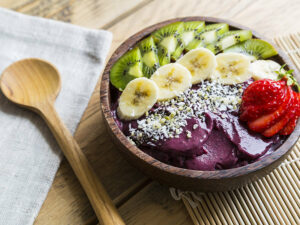
Açaí Bowl (aka açaí na tigela in local)
A popular dish in Brazilian cuisine, this smoothie bowl is made from frozen and mashed açaí berries, often topped with granola, bananas, and a variety of other fruits.
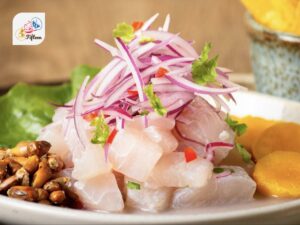
Ceviche
A staple delight in Peruvian cuisine, ceviche consists of fresh raw fish marinated in citrus juices, primarily lime, and mixed with onions, cilantro, and peppers. Some Peru-style ceviche include camu camu fruit.
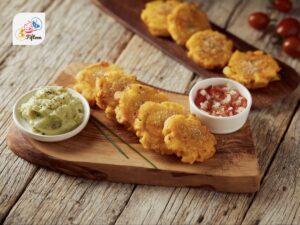
Tostones
Made from green banana/plantain, tostones are a favorite snack delight in Venezuela that you can buy from street vendors.

Guarapita
A refreshing beverage from Venezuela, this cocktail is crafted with rum or aguardiente and fruit juices of passion fruit, mango, or pineapple.
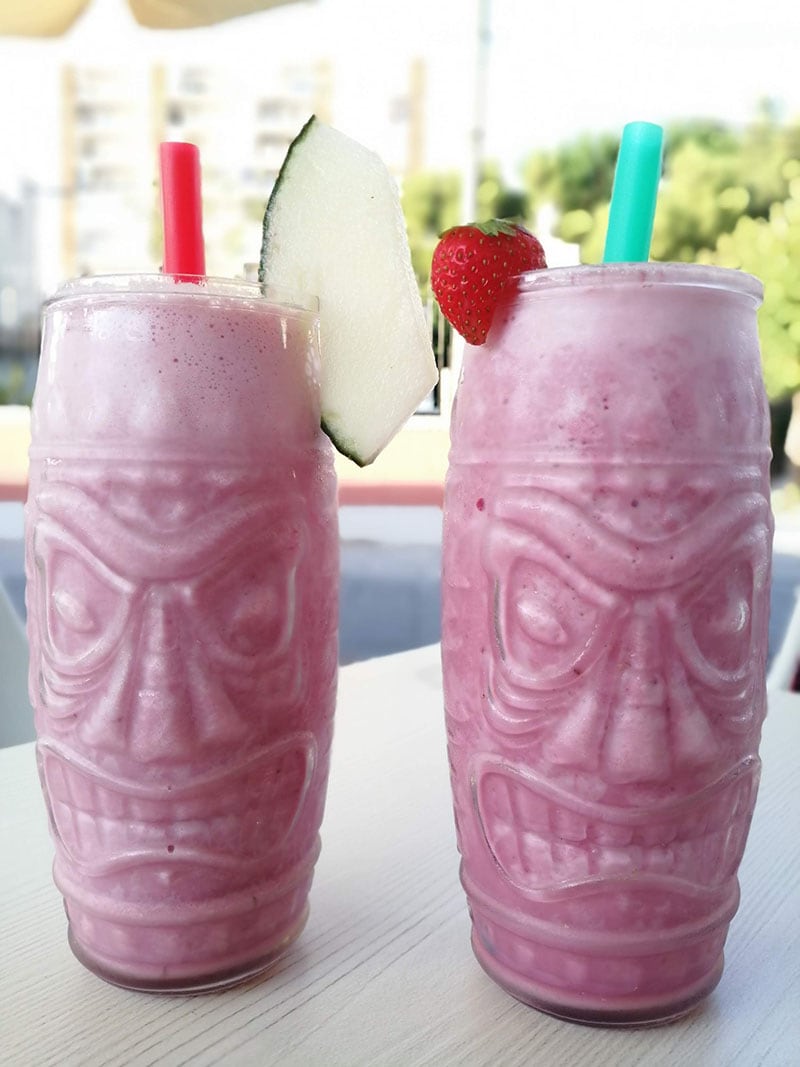
Fruit Smoothie (aka batidos in local)
A creamy drink well-loved in Colombia, this non-alcoholic beverage is typically made from tropical fruits, milk, and water.
Overall, South American fruits provide a colorful and unique taste of nature’s offerings. So, which ones have you tried before? Share your favorites and check our site for more delicious fruit options as well as other cuisines in the world.


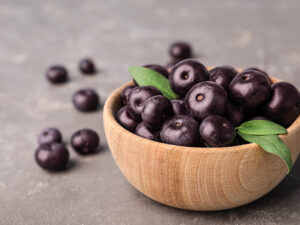
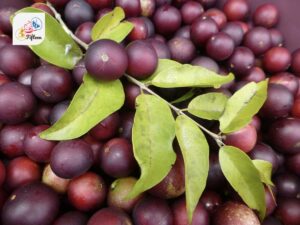
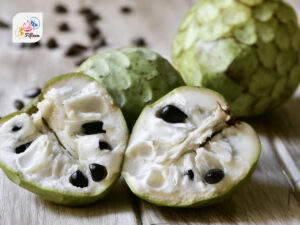
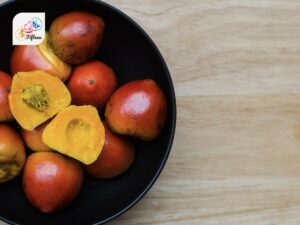
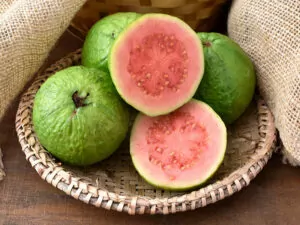
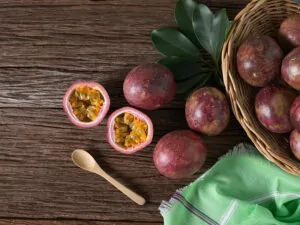
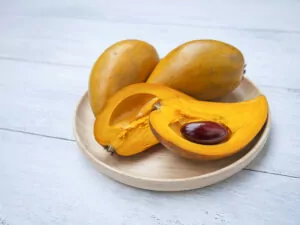
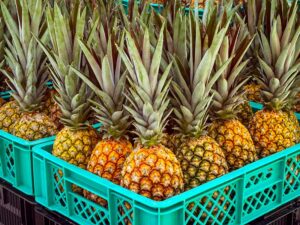
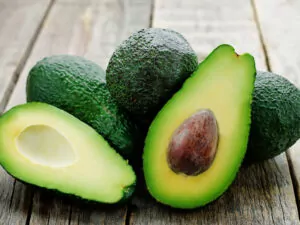
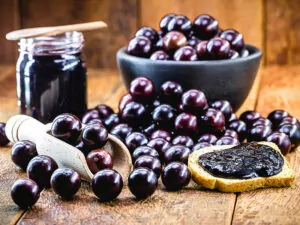
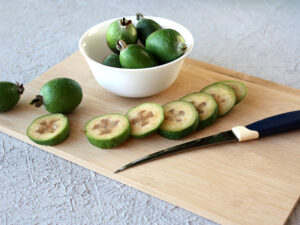
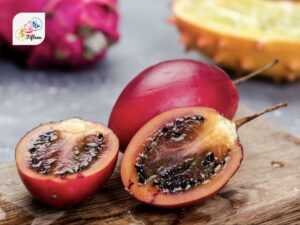
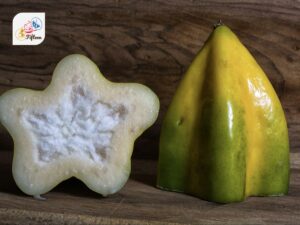
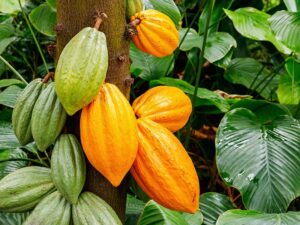
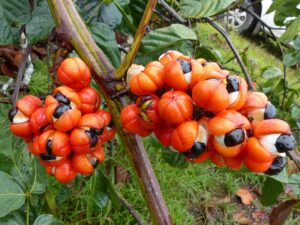
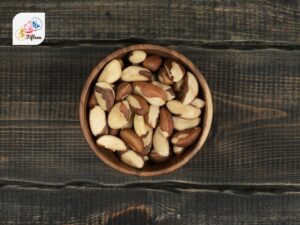
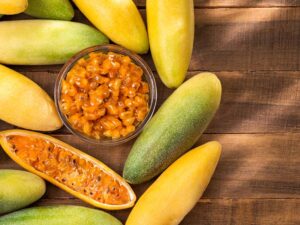
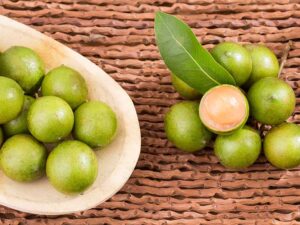
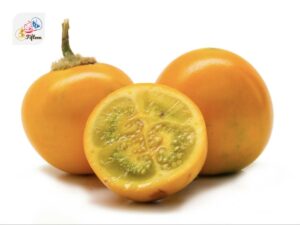
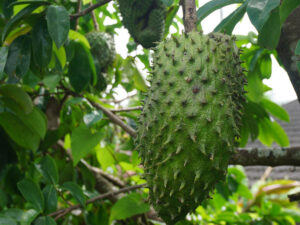
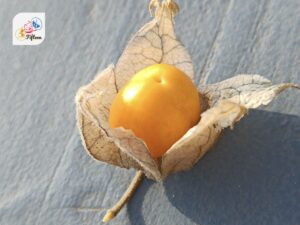
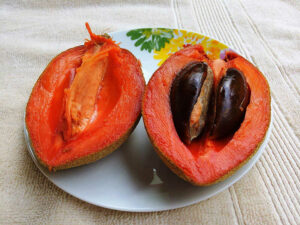
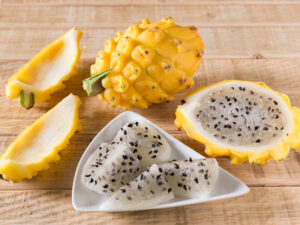
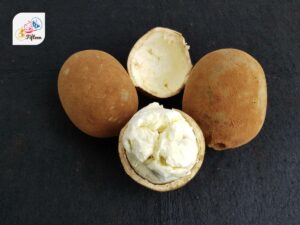
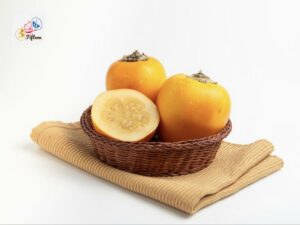
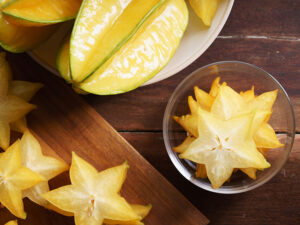
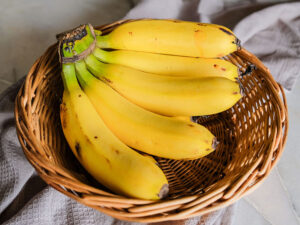
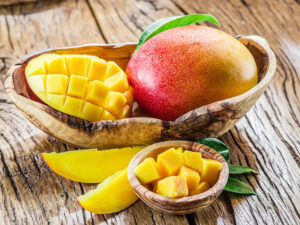
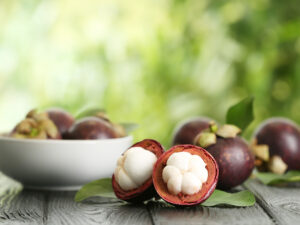
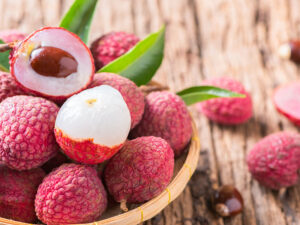
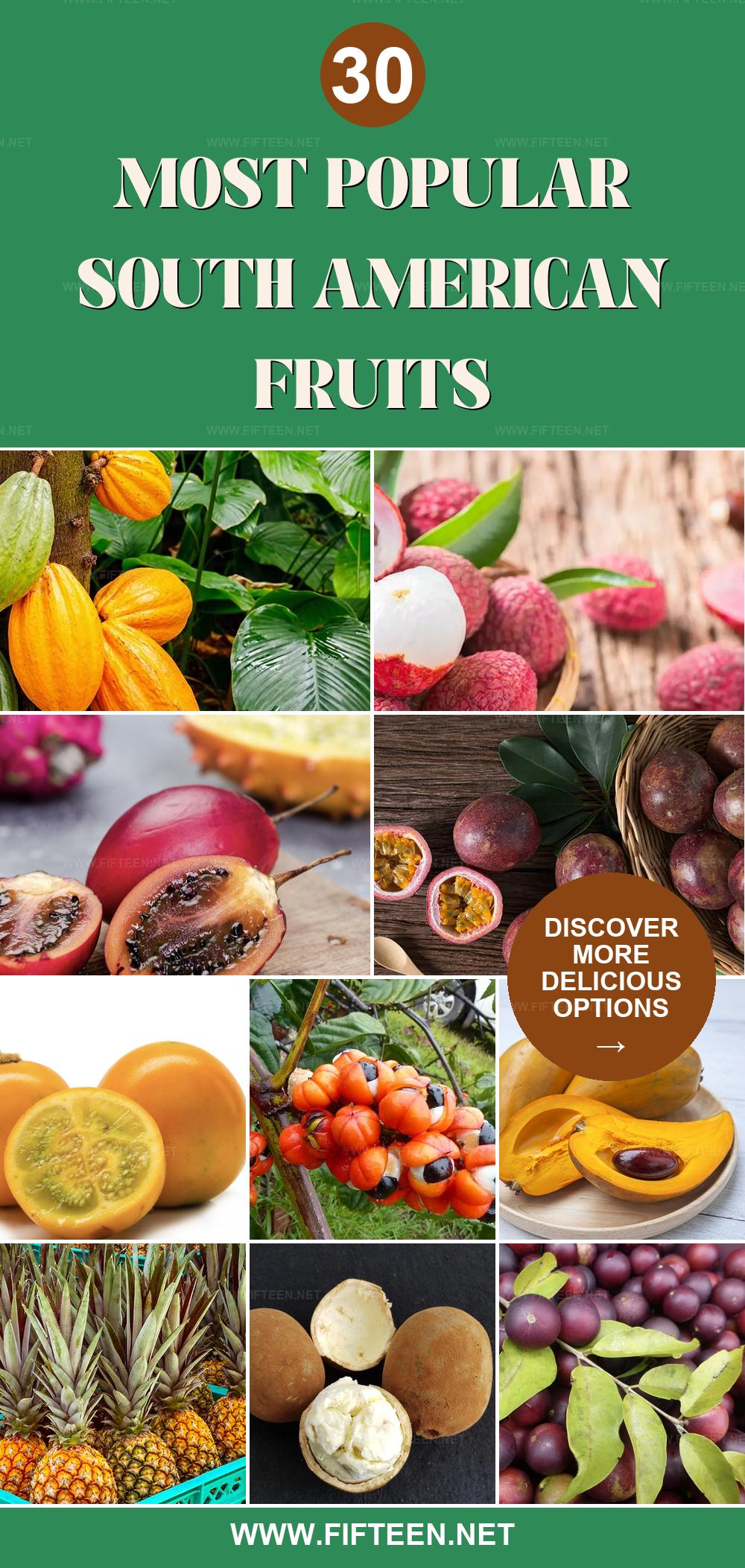
Jamie Scott
Editor in Chief, Senior Content Writer
Expertise
Home Cooking, Meal Planning, Recipe Development, Baking and Pastry, Food Editor, Cooking-video Maker, Western Food Evaluation Expert
Education
Le Cordon Bleu College of Culinary Arts
Local Community College, New York, NY
Jamie Scott is a skilled culinary expert and content creator specializing in Western cuisine. With over 15 years in the culinary field and formal training from Le Cordon Bleu, Paris, Jamie deeply understands how to blend nutrition with delicious flavors. His passion for cooking matches his commitment to making healthy eating accessible and enjoyable.
On Fifteen.net, Jamie brings a fresh perspective to classic dishes and beverages, offering readers insightful recipes, cooking tips, and a fresh view on meal planning that emphasizes taste, health, and simplicity.